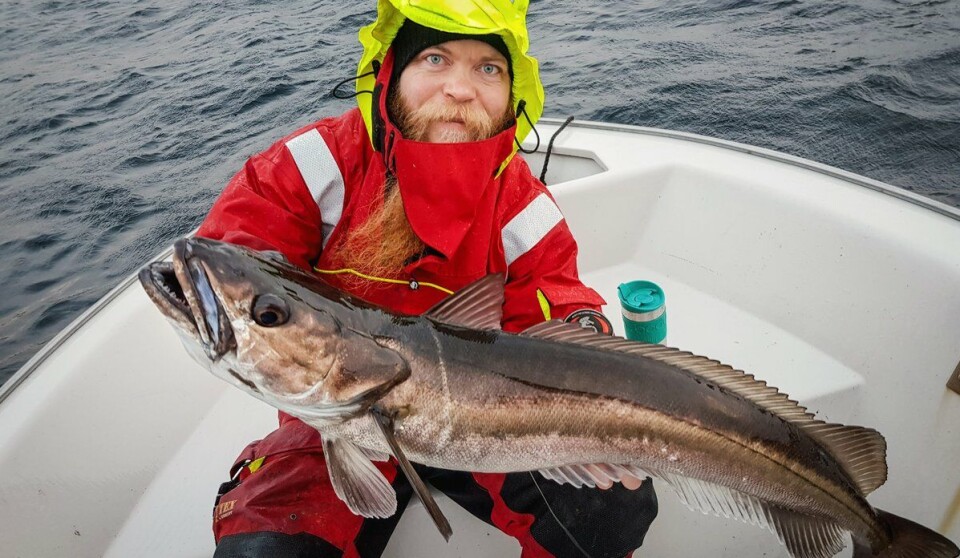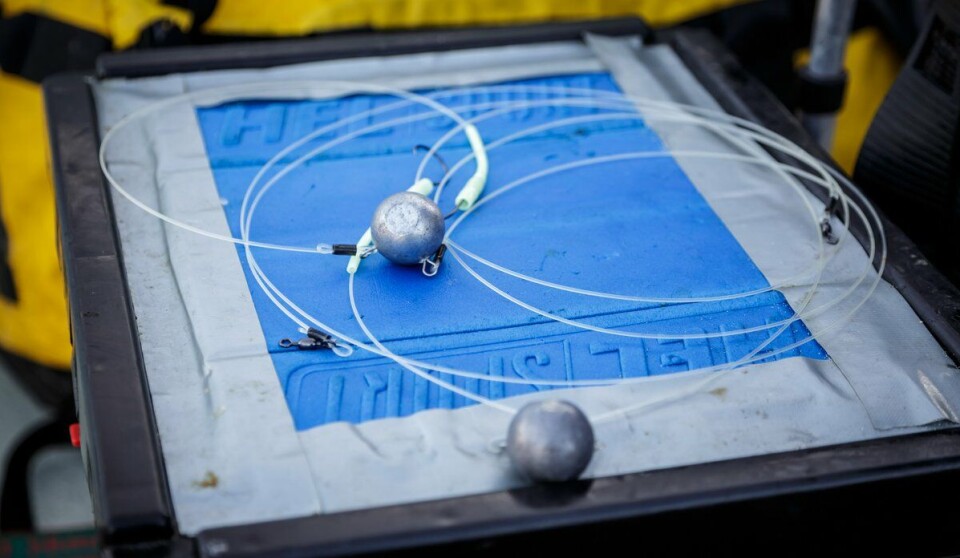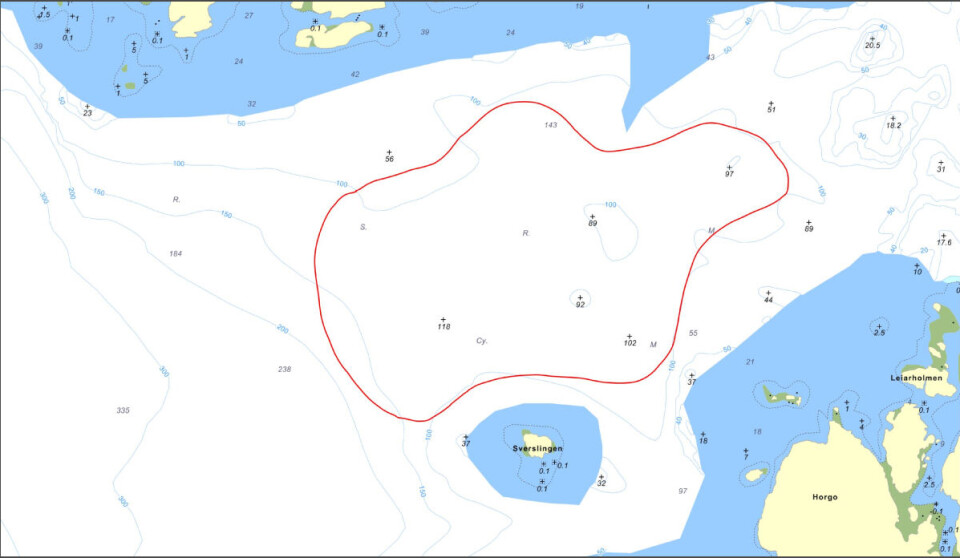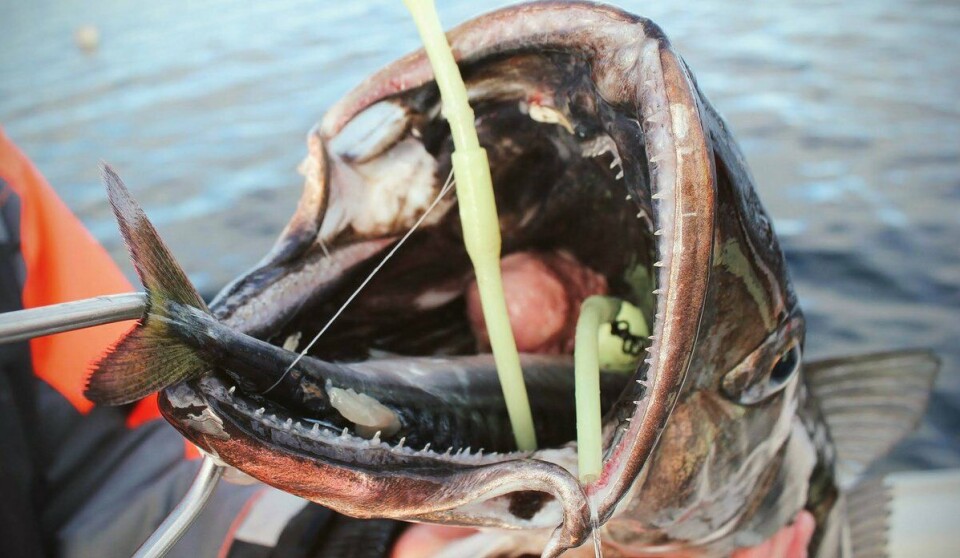THIS ARTICLE/PRESS RELEASE IS PAID FOR AND PRESENTED BY the Institute of Marine Research - read more

This is how you catch a hake, a common fish you've probably never caught before
Special effort is required to get to know the 'cold water barracuda'. The IMR's leading angling expert reveals the secrets of the European hake.
The hake has benefitted from climate change in our waters. It has become more common in the North Sea and likely also in coastal waters, particularly in Western Norway. It is a voracious hunter, but it cannot be outsmarted easily.
“Bait fishing from a boat is the main way to target hake. And the bait needs to be big,” research technician Jan Hinriksson says.
A ‘new’ species for anglers
Hinriksson is one of the leading anglers at the Institute of Marine Research (IMR). Angling is a key skill when scientists need to target specific fish species, for example in order to tag them.
“Angling for hake caught on in Western Norway around 10 years ago. Since then, the techniques have developed and the level of interest has picked up,” he says.
He puts this down to the hake’s delicious taste, beautiful colours, big teeth and dramatic disposition. It has been called both the ‘cold water barracuda’ and ‘sea pike’.
“The hake is probably our most exciting target species in the 2-10 kilogram class. It is common in coastal waters and fjords everywhere from Trøndelag and further south. Hordaland is a hotspot with lots of really big specimens,” he says.
Nevertheless, few recreational anglers are familiar with the hake.
So how do you catch one?

Requires powerful equipment
“Bait, bait and more bait – preferably a whole mackerel and never less than half a fillet. Fatty fish is best if you’re using fillets, while small saithe or poor cod also work great when using whole fish,” Hinriksson says.
He recommends using a sinker weighing around 200-400 grams and a powerful 20-30 cm long leader before finishing off with a big hook (size 6/0-12/0).
The leader is the part of a fishing line that is closest to the hook. It is often made of thinner and finer material than the rest of the line, but it can also be thicker or made of metal for large fish species with sharp teeth, such as halibut and pike.
“On account of its razor-sharp teeth, the leader should be one millimetre thick, preferably protected with a rubber tub,” he says. “It is an advantage if the tube is luminous. And it’s not a bad idea to add a blinking light. The hake is fittingly the species where we see the best effect when using artificial light."

Where can it be found?
You catch hake from a boat, but not at the more classic fishing spots.
“No, you should avoid the typical steep slopes, and rather find somewhere with a flat-ish muddy bottom at a depth of 70-150 metres. Ideally close to deeper waters. It is good if there is a bit of current and some small mounds on the seabed,” he says. “In sunny weather, the hake tends to stay near the bottom, on the lookout for prey. If it isn’t there, you can gradually work your way up to 50 metres, with lengthy pauses, and then back down again.”
Hinriksson’s top tip for anglers without an echo sounder is to use nautical charts showing the depth, which are available online.

Attacks from below
According to Hinriksson, the bite of the hake is unusual. It attacks from below, tends to take the bait calmly and then stays completely still. For a while.
“Many anglers’ reflex is to lift their rod in order to set the hook. But that is the last thing you should do with hake. If you do it at this stage, you will lose both the fish and your bait," he says. “You need to give the hake it´s dramatic pause. Stay calm and hold still until it heads into the deep and you feel real resistance. That’s when you lift your rod. Be prepared for a real struggle."
The hake is notorious for being brutal, both in appearance and fighting spirit.

Razor-sharp teeth
It may be a good idea to bring some strong pliers with you to remove the hook.
“The teeth are so sharp that you may not even notice it if you brush against them. Until you suddenly see the blood running from your hands. They really are no joke,” Hinriksson says.
But in the kitchen, on the other hand, it is sweet and obliging. The hake is easy to fillet and its meat its firm and good.
“It is forgiving, and there are lots of good ways to prepare it,” he says. “Good luck!”

This article/press release is paid for and presented by the Institute of Marine Research
This content is created by the Institute of Marine Research's communication staff, who use this platform to communicate science and share results from research with the public. The Institute of Marine Research is one of more than 80 owners of ScienceNorway.no. Read more here.
See more content from the Institute of Marine Research:
-
These whales have summer jobs as ocean fertilisers
-
Have researchers found the world’s first bamboo coral reef?
-
Herring suffered collective memory loss and forgot about their spawning ground
-
Researchers found 1,580 different bacteria in Bergen's sewage. They are all resistant to antibiotics
-
For the first time, marine researchers have remotely controlled an unmanned vessel from the control room in Bergen
-
New discovery: Cod can adjust to climate change – from one generation to the next




































